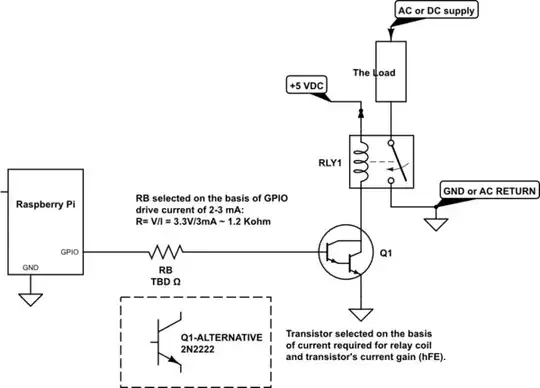Some Comments:
@mike's answer is correct. I'll add this:
- The "reliability problem" may be in your design, not the relay.
- You've given us no specifications on your relay, so we don't know if you've chosen properly.
- Depending on the current required for the coil relay, a small bipolar npn transistor may work perfectly well.
An Answer:
Here's a schematic showing how to connect the components:

simulate this circuit – Schematic created using CircuitLab
Calculations and Explanations
In general, I feel the current draw from a GPIO pin should be limited to 2-3 mA (Here's why).
I also feel that Bipolar transistors are the best choice for interfacing to the RPi's GPIO because they are current driven. FETs and MOSFETs are voltage driven, and require gate drive voltages on the order of 7 VDC to minimize drain-to-source voltage drop. Bipolars are almost always the best choice for RPi projects!
Given that the transistor's base current drive will be limited to 2-3 mA, selection of a proper transistor is straightforward. Referring to the schematic above, calculate the minimum dc current gain (hFE) as follows:
hFE,min = (Relay Coil Current) / 2.5mA
For example, if a relay needs 100mA of current through the coil to close (or open) the relay's contacts, then a transistor with a minimum dc current gain (hFE,min) of 40 is required. There are many small signal transistors that will meet that requirement; e.g. the workhorse 2N2222 transistor. Better still, the 2N2222 (and improved 2N2222A) are cheap and readily available.
